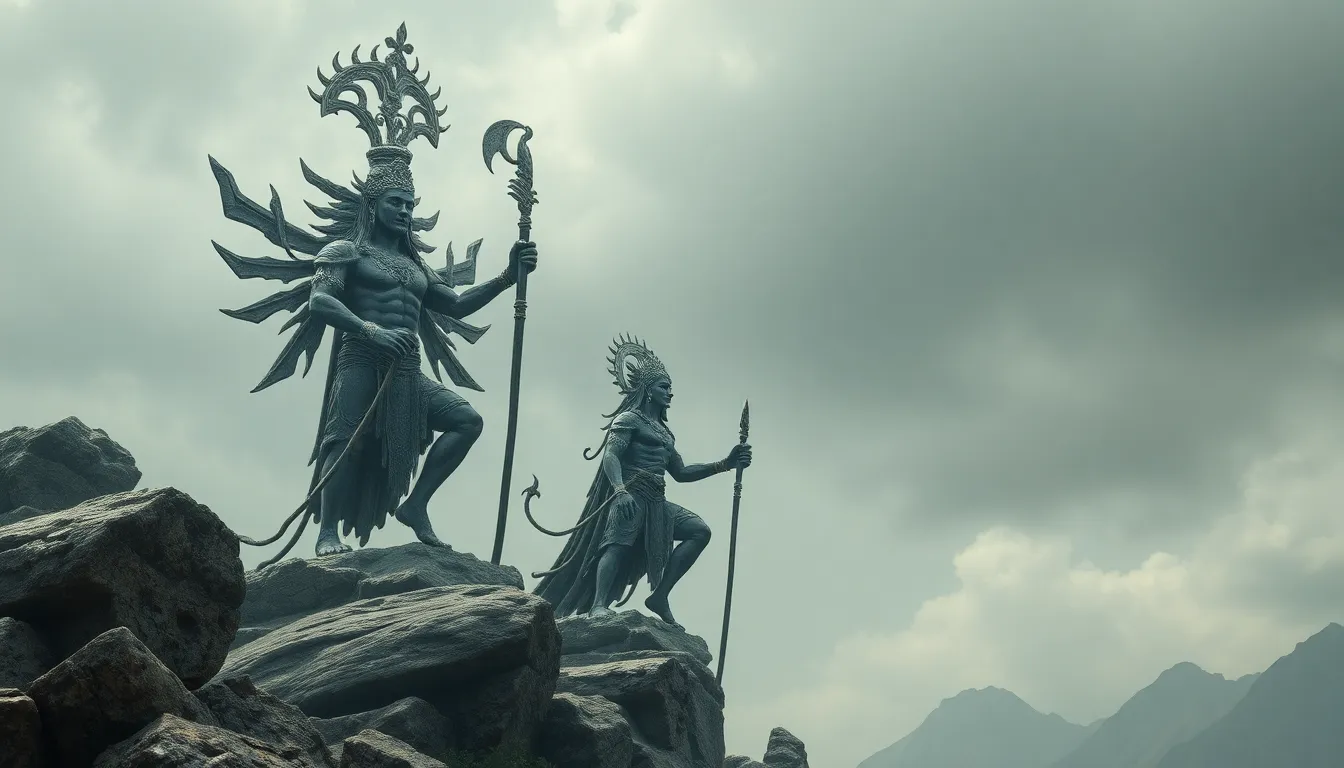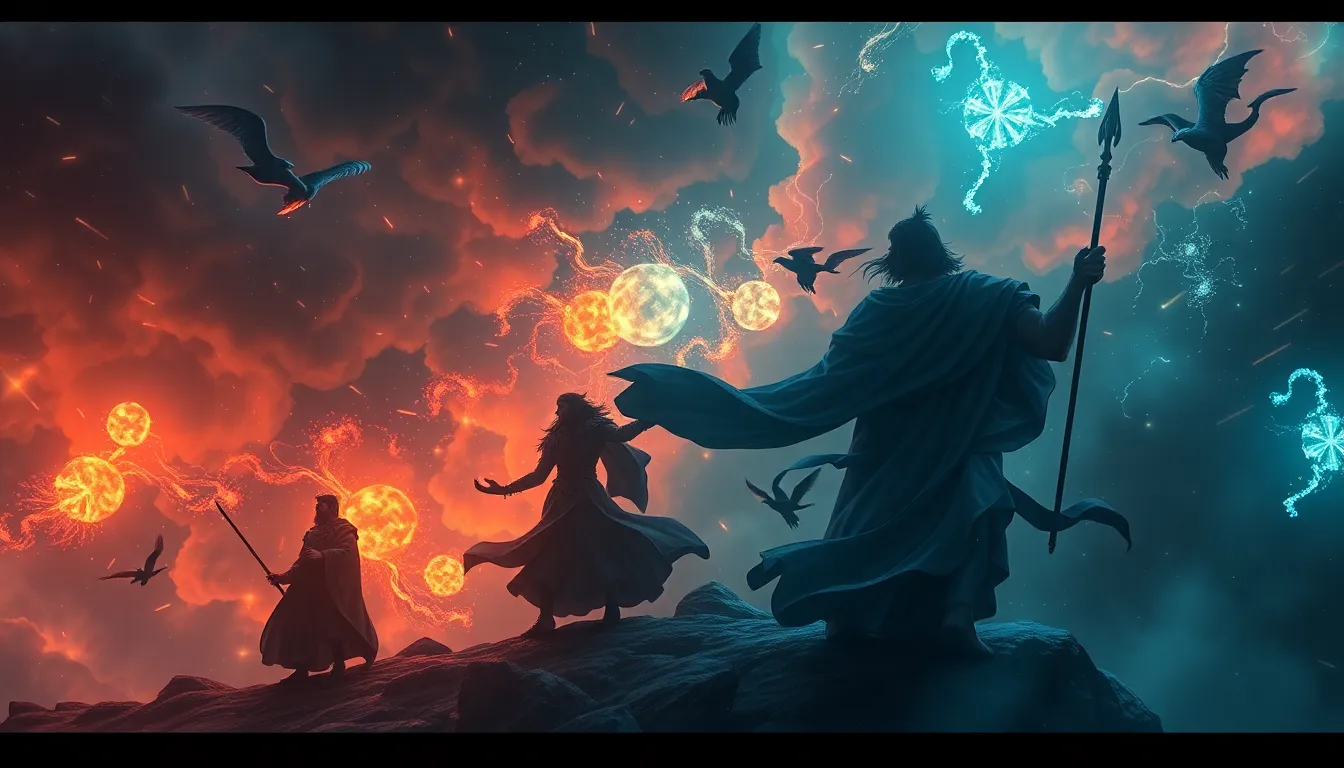The Sacred Spheres: Mythical Places in the Cosmos
Introduction to Mythical Cosmology
Mythical cosmology is the study of the universe as depicted in myth and folklore, exploring how various cultures interpret the cosmos and their place within it. Sacred spheres, in this context, refer to those mythical places that hold significant spiritual, religious, or cultural meaning. These realms often serve as the backdrop for divine interactions, moral lessons, and the exploration of human existence. They are not merely physical locations but are imbued with deeper meanings that resonate with human beliefs and aspirations.
The significance of these mythical places is profound. They serve as a source of inspiration, a means of understanding the cosmos, and a way to connect with the divine. Throughout history, sacred spheres have shaped cultures, influenced religions, and guided the moral compass of civilizations.
The Concept of Sacred Spheres Across Cultures
Different civilizations have diverse perceptions of sacred places in the cosmos, often reflecting their unique cultural backgrounds and spiritual beliefs. In Eastern traditions, celestial realms are often seen as interconnected with earthly existence, embodying a cycle of life and rebirth. In contrast, Western mythologies frequently depict a more linear journey with a distinct separation between the celestial and the terrestrial.
- Eastern Mythologies:
- Emphasis on harmony and balance between earthly life and celestial realms.
- Concepts like karma and reincarnation reflect interconnectedness.
- Western Mythologies:
- Focus on a dichotomy between heaven and earth, good and evil.
- Often feature divine judgment and the afterlife as distinct from earthly existence.
The Mythical Landscape of Ancient Greece
In Ancient Greece, Mount Olympus stood as the esteemed abode of the gods, a sacred sphere representing the pinnacle of divine power and authority. The mountain was not just a physical location but a symbol of the divine order, where gods and goddesses presided over humanity. The twelve Olympian gods, including Zeus, Hera, and Athena, were believed to interact with mortals from this celestial realm, influencing human affairs and shaping destinies.
In stark contrast lies the Underworld, a complex realm depicted in Greek mythology, primarily known through the stories of Hades. It was a place of shadows and spirits, ruled by the god Hades. The Underworld’s geography was equally mythical, featuring rivers such as Styx and Lethe, and realms like Elysium, which offered a peaceful afterlife for the virtuous. This duality of Olympus and the Underworld illustrates the Greeks’ understanding of life’s cycles—birth, life, death, and beyond.
Heavenly Realms in Hindu Cosmology
In Hindu cosmology, the concept of Swarga represents a heavenly realm where souls experience the fruits of their good deeds before reincarnating. This celestial paradise is often depicted as lush and beautiful, filled with divine beings and pleasures. It serves as a temporary abode, emphasizing the belief in the cycle of life and the importance of karma.
Mount Meru holds a crucial place in Hindu cosmology, regarded as the axis mundi, the cosmic axis connecting heaven and earth. This sacred mountain symbolizes the center of the universe and is often depicted in various texts as a spiritual epicenter where gods reside. Meru embodies the connection between the material and spiritual realms, representing the path to enlightenment and ultimate liberation.
The Underworlds of Various Cultures
Many cultures have their own depictions of underworlds, each reflecting unique beliefs about death and the afterlife. In Greek mythology, Hades is a shadowy realm where souls journey after death. Similarly, the Maya believed in Xibalba, a complex underworld that tested the souls of the deceased through trials and challenges.
Other notable underworlds include:
- Hel: In Norse mythology, Hel is ruled by the goddess of the same name, where those who did not die a heroic death reside.
- Duat: In ancient Egyptian belief, Duat is the realm of the dead, where the soul undergoes judgment and transition.
These underworlds play a significant role in the cycles of life and death, providing a narrative framework for understanding mortality and the afterlife.
Mythical Islands and Lost Continents
Mythical islands and lost continents have long captured the human imagination. Atlantis, often depicted as a highly advanced civilization that mysteriously sank into the ocean, serves as a cautionary tale about hubris and the impermanence of human achievement. Its legacy continues to influence literature and popular culture, symbolizing lost knowledge and the quest for understanding.
Other notable mythical locations include:
- Avalon: A mystical island in Arthurian legend, often associated with healing and magic.
- Thule: A distant northern land mentioned in ancient texts, representing the unknown and the unreachable.
These locations evoke a sense of wonder, serving as metaphors for exploration and the search for truth beyond the known world.
Celestial Bodies as Sacred Spaces
Celestial bodies, such as the moon and stars, hold sacred symbolism in various mythologies. The moon is often associated with femininity, intuition, and the cyclical nature of life. For instance, in many cultures, the phases of the moon symbolize the stages of life, from birth to death.
Stars, too, serve as significant symbols. They are often perceived as guides for navigation, representing hope and inspiration. In astrology, planets like Jupiter and Venus carry mythic representations, influencing human behavior and destiny. The interplay between celestial bodies and human life emphasizes the connection between the cosmos and earthly existence.
Modern Interpretations of Mythical Cosmic Places
Contemporary literature, film, and art continue to reinterpret these sacred spheres, weaving them into narratives that resonate with modern audiences. Science fiction has particularly played a role in reshaping our understanding of mythical places, exploring themes of otherworldly realms and cosmic adventures.
Popular media often draws inspiration from ancient myths, reimagining them in futuristic contexts. This blending of mythology with modern storytelling reflects humanity’s enduring fascination with the cosmos and the quest for meaning beyond our terrestrial experience.
The Psychological and Spiritual Significance of Sacred Spheres
From a psychological perspective, Carl Jung’s concept of archetypes and the collective unconscious highlights the universal themes found in myth. Sacred spheres represent archetypal symbols that resonate within our subconscious, providing a framework for understanding our experiences and emotions.
These mythical places play a crucial role in both personal and collective spirituality. They offer a space for contemplation, exploration, and connection to something greater than oneself. Engaging with these myths allows individuals to reflect on their own journeys and the shared experiences of humanity.
Conclusion: The Enduring Legacy of Mythical Places in the Cosmos
The sacred spheres of mythology continue to resonate with humanity, reflecting our deepest fears, hopes, and aspirations. They serve as timeless reminders of our connection to the cosmos and the mysteries that lie beyond our understanding. As we navigate the complexities of modern life, preserving and understanding these myths remains essential for enriching our cultural heritage and spiritual journey.
In a world increasingly dominated by science and technology, the exploration of these mythical places invites us to reconnect with our roots, fostering a sense of wonder and curiosity about the universe and our place within it.




